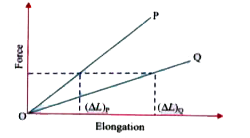Show that the two matrices A, P−1AP have the same characteristic roots.
To show that the two matrices A and P−1AP have the same characteristic roots, we will follow these steps:
Step 1: Define the characteristic polynomial
The characteristic polynomial of a matrix M is given by:
pM(λ)=det(M−λI
where I is the identity matrix of the same size as M.
Step 2: Write the characteristic polynomial for matrix A
For the matrix A, the characteristic polynomial is:
pA(λ)=det(A−λI)
Step 3: Write the characteristic polynomial for matrix B=P−1AP
Now, we need to find the characteristic polynomial for the matrix B=P−1AP:
pB(λ)=det(B−λI)=det(P−1AP−λI)
Step 4: Manipulate the expression for pB(λ)
We can rewrite pB(λ):
pB(λ)=det(P−1AP−λI)=det(P−1(A−λI)P)
Step 5: Use the property of determinants
Using the property of determinants that states det(ABC)=det(A)det(B)det(C), we can simplify:
pB(λ)=det(P−1)det(A−λI)det(P)
Step 6: Simplify using the determinant of P
Since det(P−1)=1det(P), we can express pB(λ) as:
pB(λ)=1det(P)det(A−λI)det(P)=det(A−λI)
Step 7: Conclude that the characteristic polynomials are the same
Thus, we have:
pB(λ)=pA(λ)
This means that the characteristic polynomials of matrices A and P−1AP are the same, which implies that they have the same characteristic roots (eigenvalues).
Conclusion
Therefore, we have shown that the matrices A and P−1AP have the same characteristic roots.
---
The characteristic polynomial of a matrix M is given by:
pM(λ)=det(M−λI
where I is the identity matrix of the same size as M.
For the matrix A, the characteristic polynomial is:
pA(λ)=det(A−λI)
Now, we need to find the characteristic polynomial for the matrix B=P−1AP:
pB(λ)=det(B−λI)=det(P−1AP−λI)
We can rewrite pB(λ):
pB(λ)=det(P−1AP−λI)=det(P−1(A−λI)P)
Using the property of determinants that states det(ABC)=det(A)det(B)det(C), we can simplify:
pB(λ)=det(P−1)det(A−λI)det(P)
Since det(P−1)=1det(P), we can express pB(λ) as:
pB(λ)=1det(P)det(A−λI)det(P)=det(A−λI)
Thus, we have:
pB(λ)=pA(λ)
This means that the characteristic polynomials of matrices A and P−1AP are the same, which implies that they have the same characteristic roots (eigenvalues).
Therefore, we have shown that the matrices A and P−1AP have the same characteristic roots.
Topper's Solved these Questions
- MATRICESBOOK - CENGAGECHAPTER - MATRICESEXERCISE - Exercise (Single)
65 Videos
- MATRICESBOOK - CENGAGECHAPTER - MATRICESEXERCISE - Exercise (Multiple)
33 Videos
- MATRICESBOOK - CENGAGECHAPTER - MATRICESEXERCISE - Exercise 13.4
12 Videos
- MATHMETICAL REASONINGBOOK - CENGAGECHAPTER - MATHMETICAL REASONINGEXERCISE - JEE Previous Year
10 Videos
- METHODS OF DIFFERENTIATIONBOOK - CENGAGECHAPTER - METHODS OF DIFFERENTIATIONEXERCISE - Single Correct Answer Type
46 Videos
Similar Questions
Knowledge Check
P is a non-singular matrix and A, B are two matrices such that B=P−1AP. The true statements among the following are
AA is invertible iff B is invertib,eBBn=P−1AnP∀n∈NC∀λ∈R,B−λI=P−1(A−λI)PDA and B are both singular matricesFor any two matrices A and B , we have
AAB=BABAB≠BACAB=ODnone of theseFor any two matrices A and B, we have
AAB=BABAB≠BACAB=ODNone of these
If x2+px+q=0andx2+qx+p=0,(p≠q) have a common roots, show that 1+p+q=0 . Also, show that their other roots are the roots of the equation x2+x+pq=0.
View SolutionThe sphere and cube have same surface. Show that the ratio of the volume of sphere to that of cube is √6 : √π
View SolutionThe graph in Fig. 11.8 shows the variation of elongation with tensile force for two wires P and Q.

If P and Q are of the same material and have the same length, which one has a greater area of cross section ?
View SolutionShow that two matrices
A=[1−10211] and B=[301031] are row equivalent.
View SolutionTwo A.P.'s have the same common difference. The first term of one A.P. is 2 and that of the other is 7. Show that the difference between their 10th terms is the same as the difference between their 21th terms, which is the same as the difference between any two corresponding terms.
View Solution
